|
Strange Behavior? Maybe your dog likes to run circles around you and your kids. Or she nips at your heels if you’re moving too slowly. He may also corral your kids in a corner of the room, heading them off when they try to move away. Is your dog having behavioral problems? Nope – he’s just showing herding behavior. 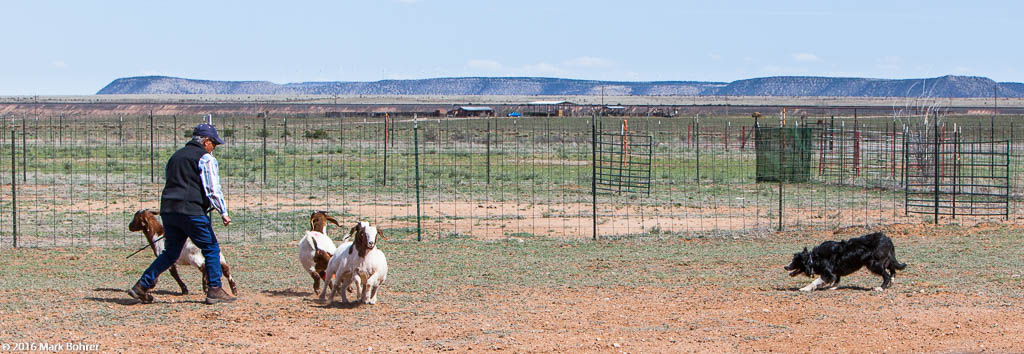 Handler, dog and stock – what herding’s all about Herding Breeds Breeds like Border Collies, Australian Shepherds and Shetland Sheepdogs are still selected for herding instincts. Before trucks and mechanized ranches, these and other breeds worked to herd sheep, cattle and other livestock with human handlers, and sometimes alone. Horses were expensive, so dogs provided an effective lower-cost alternative. Today’s mechanized world has displaced many working animals, but dogs still play an important role, especially with sheep and goats in remote areas. 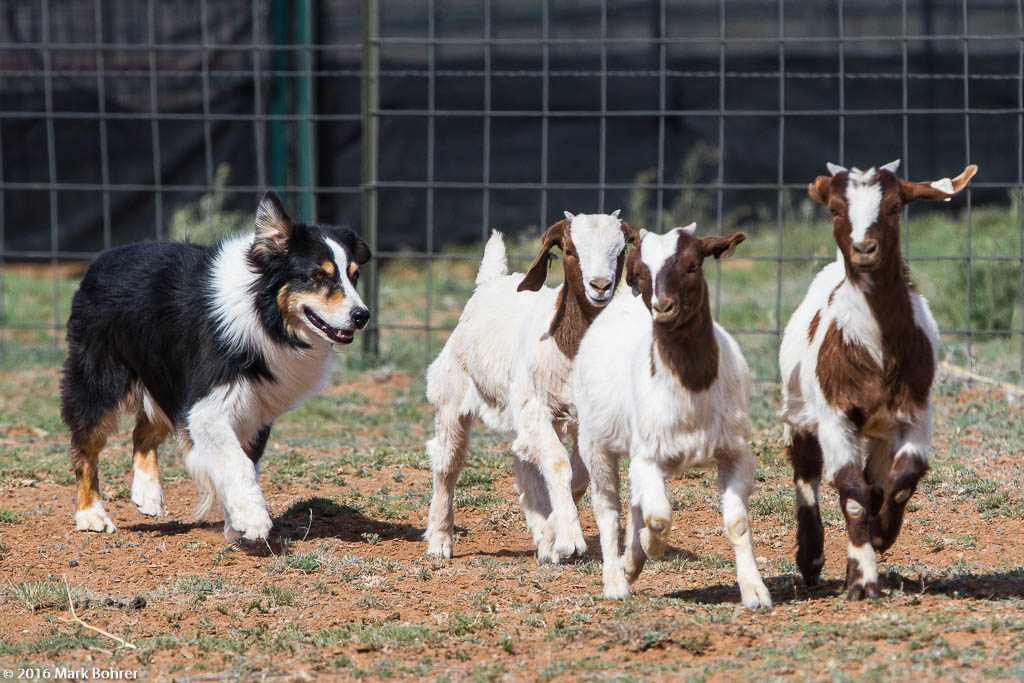 Working stock – Free To Be Ranch You Both Need Training Dogs and handlers require training to get beyond the running-circles-around-you stage. That’s where New Mexico’s Free To Be Ranch and places like it come in. The Ranch hosts training with real livestock on large acreage, leading to AHBA/AKC-sanctioned trials and eventual herding titles. 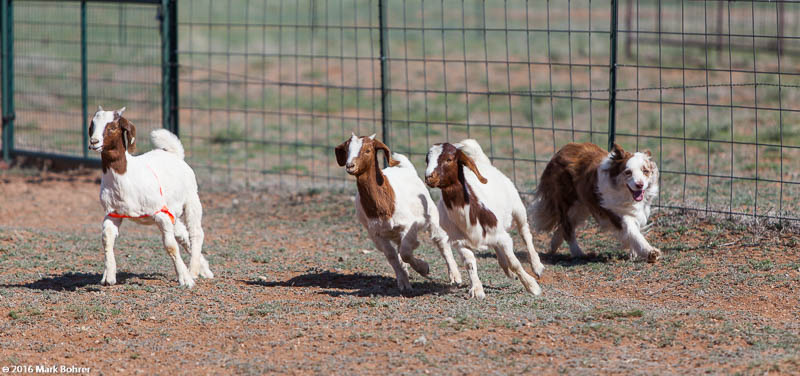 Turning ’em – Free To Be Ranch Not the Westminster Dog Show These aren’t trials you’ll see at Westminster’s beauty contest. A dog must start off-lead in the down-stay, not moving until the handler tells him to. Then the dog drives live stock around one pylon, down a field, and around a second pylon, turning them again and returning to the first pylon, all under the handler’s control. Dogs must then return the stock to the second pylon, followed by a stop and a recall to the handler. After that, dog and handler leave the arena. All of this must be completed under a specific time limit. In some trials, you may see a handler and dog work goats into a pen or other ‘hold’ position where the handler removes a ribbon from a wriggling ewe. The dog may work the herd around the pen, skirting obstacles and ultimately driving the goats through a gate the handler locks behind them. These tests mimic real herding tasks on a working ranch. 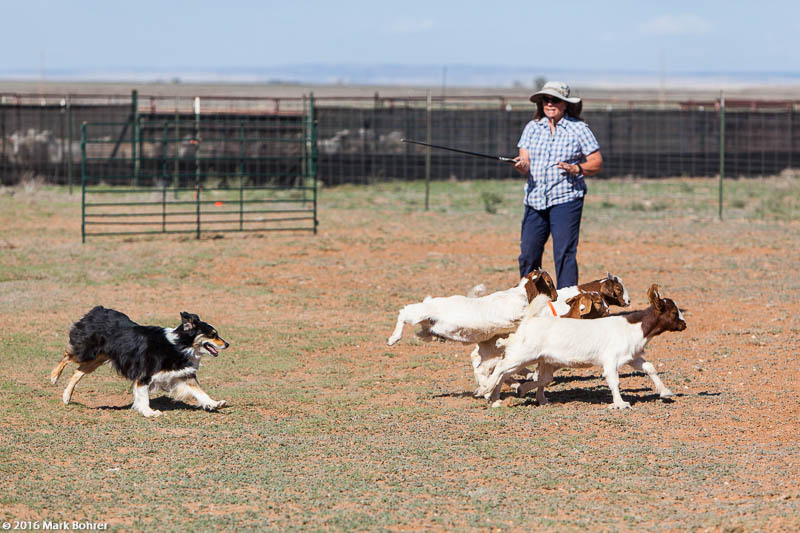 Dog and handler partnership – Free To Be Ranch It takes a strong bond and trust between handler and dog to make this work. It’s a little easier with dogs bred to herd, since they typically love the work to begin with. 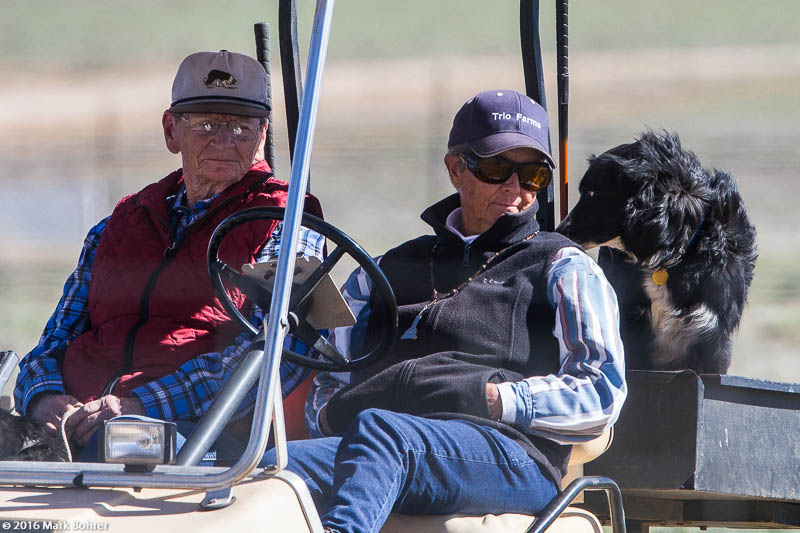 Enjoying the trials – Free To Be Ranch Watch An Event It’s possible to watch a trial for the cost of your lodging. The Free To Be Ranch welcomes spectators, and offers limited space in a bunkhouse, plus some 30A and 50A electric hookups for your RV. The Ranch holds trials several times a season. With any herding facility, you’ll need to call or email in advance for dates and lodging. But it’s a real treat to watch dogs work stock, hearkening back to their original partnership with humans. The Free To Be is also a working goat and sheep ranch, with dogs and handlers taking care of livestock for breeding, stock exhibitions, and meat supply. 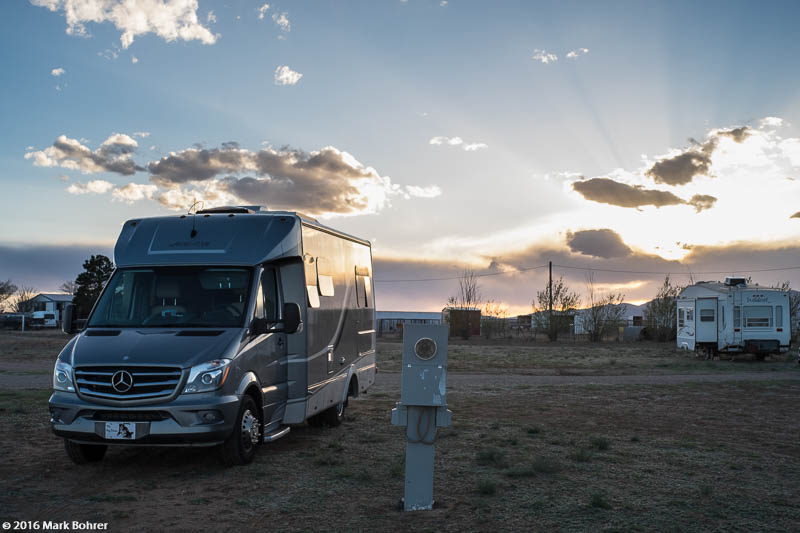 RV site at Free To Be Ranch The American Herding Breed Association sponsors herding trials – check for one near you. The American Kennel Club also has a calendar of herding events. Shot Notes Shooting a herding trial is a lot like shooting a dual-slalom mountain bike race from the sidelines. I had two cameras, starting off with a 70-200mm f/2.8L IS lens on one and a 24-70mm f/2.8L on the other. I also had a 400mm f/4 DO IS lens with me. I ended putting the 24-70mm away since I needed the reach of the 400mm and 70-200mm lenses – I had to shoot outside the 100 ft x 80 ft penned area of the trial. I ran around two sides on one corner of the pen to shoot what I wanted. Aperture was a compromise between fairly large for good subject isolation with depth of field, but small enough for enough DOF to make up for slightly-missed focus. After awhile, I could better predict where dog and stock would be, but there was always enough uncertainty that I couldn’t shoot at maximum aperture. Fortunately, it was an overcast day, so afternoon shadows were less harsh than they would have been in full sun. I chose high-enough ISOs to give me action-freezing shutter speeds. Shot Design I varied my shot design between tightly-framed action and looser pictures showing more of the venue. I’ve faced some of the same choices shooting mass starts at cross-country mountain bike races and pairs action in dual slalom. I use both tight and loose shots to mix it up for viewers and tell a good story. |
(408) 483-3782
Curious about how to shoot ruins?(408) 483-3782

Recent Comments